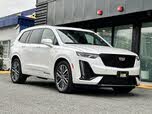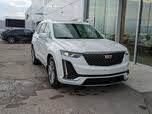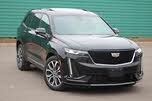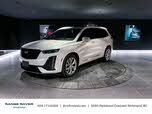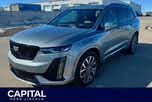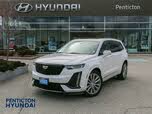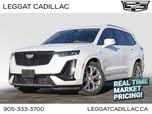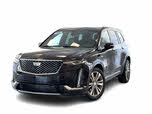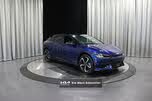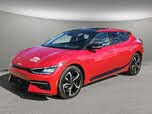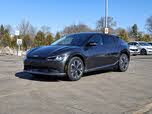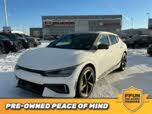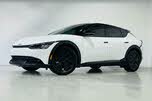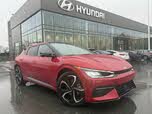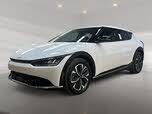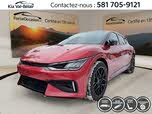Cadillac XT6 vs Kia EV6
Overview | ||
Years produced | 2020-Present | 2022-Present |
MSRP | $48,595 | $40,900 |
Average price | $47,917 | |
Listings | ||
Ratings & Reviews | ||
User reviews | ||
Expert reviews | 6.3 out of 10Read full review | 7.7 out of 10Read full review |
Pros & cons | Pros
| |
Summary | Raise your hand if you remember the Cadillac Cimarron. A quick-and-dirty response to the surging popularity of small European luxury vehicles like the BMW 3 Series, the Cimarron was based on the Chevy Cavalier, a fact apparently lost on only the poor saps who bought one. Forty years later, the model year 2022 Cadillac XT6 reminds us of that fiasco. A midsize, three-row crossover plugged into the gap between the smaller XT5 and the hulking Escalade, the XT6 is built in Spring Hill, Tennessee, where General Motors also churns out GMC Acadias. The differentiation and execution are much better this time around, but the XT6 still strikes us as a hasty rush job to capitalize on a popular segment. | We didn't expect them to go there. But the designers and engineers behind the 2022 Kia EV6 did—and deleted the template of their company's affordable, cost-conscious brand. This is an electric performance car that can genuinely compete with a Tesla Model 3 on everything from tech to style to acceleration to charging time. It's a masterclass of fresh thinking in a market segment dominated by rehashed ideas. And yet, it's hampered by the same major problems that, for decades, remain unresolved. The EV6 would be amazing with battery technology that hasn't yet been invented. For now, we'll tell you what the present life is like with this most unusual and exciting Kia in years. |
Video | No video found | |
Popular Features & Specs | ||
Engine | 2.0L 235 hp I4 | 167 hp Electric |
Drive Train | FWD | RWD |
Seating Capacity | 7 | 5 |
Horsepower | 235 hp @ 5000 rpm | |
EV Battery Capacity | 58 kWh | |
MPG City | 21 | 136 |
MPG Highway | 27 | 100 |
Battery Charge Time (120V) | 51 hours | |
Engine | ||
Engine Name | 2.0L 235 hp I4 | 167 hp Electric |
Torque | 258 lb-ft @ 1500 rpm | |
Horsepower | 235 hp @ 5000 rpm | |
Battery Charge Time (120V) | 51 hours | |
Drivetrain | FWD | RWD |
Fuel Economy | ||
EV Battery Capacity | 58 kWh | |
MPG City | 21 | 136 |
MPG Highway | 27 | 100 |
Interior | ||
Seating Capacity | 7 | 5 |
Key Features | ||
Navigation System | Standard | |
Sunroof/Moonroof | Standard | |
Safety | ||
Front Crash Overall | 5 | 5 |
Side Crash Overall | 5 | 5 |
Dimensions & Capacity | ||
Cargo Space | 12.6 cu ft | 24.4 cu ft |
Curb Weight | 4362 lbs | 4017 lbs |
Height | 69.9 in | 60.8 in |
Length | 198.5 in | 184.3 in |
Width | 77.3 in | 74.0 in |
Wheelbase | 112.7 in | 114.2 in |
Maximum Payload | 1639 lbs | 987 lbs |
Number of doors | 4 | 4 |
Maximum Towing Capacity | 1000 lbs | |

By: CarGurus + AI
At CarGurus, our team of experienced automotive writers remain at the heart of our content operation, conducting hands-on car tests and writing insightful guides that are backed by years of industry experience. To complement this, we are harnessing AI to make our content offering more diverse and more helpful to shoppers than ever. To achieve this, our AI systems are based exclusively on CarGurus content, ratings and data, so that what we produce is both unique to CarGurus, and uniquely helpful to car shoppers.


